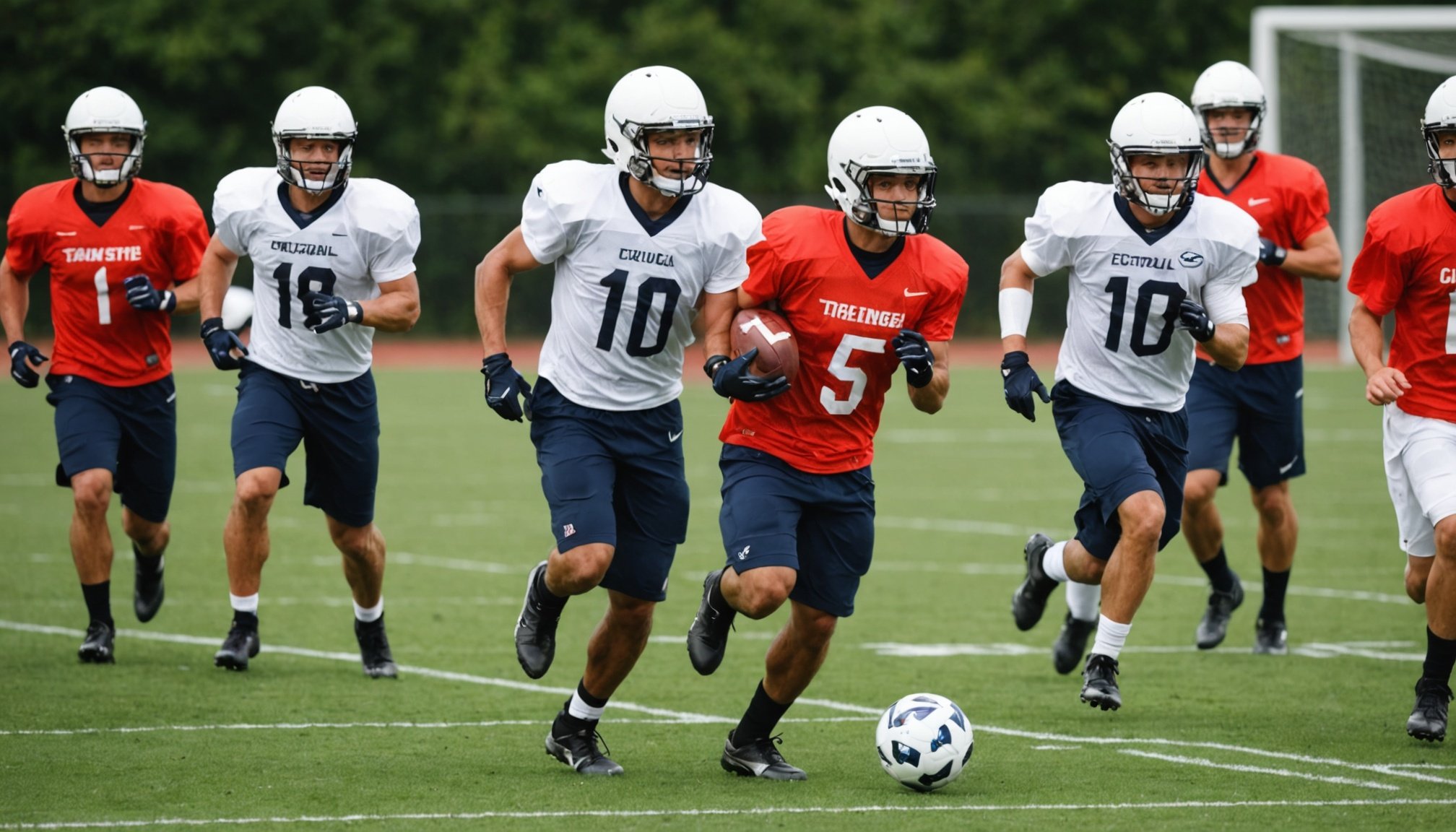Importance of Field Awareness in Football
Field awareness is a crucial component in achieving success in football. It involves a player’s ability to perceive, understand, and react to events on the field, which is essential for effective decision-making. Football insight enables players to not only focus on the ball but also anticipate movements of opponents and teammates, resulting in strategically sound decisions.
Enhanced game understanding significantly impacts performance. When players possess a keen sense of field awareness, they can anticipate plays before they unfold. This foresight allows for quicker, more informed decisions that directly contribute to a team’s success.
In parallel : Revitalizing Player Interest: Creative Approaches for Football Coaches to Design Energetic Training Programs
Professional players like Lionel Messi are often cited as prime examples of exceptional field awareness. Through their careers, they have consistently demonstrated an ability to read the game, understand spatial dynamics, and make split-second decisions that keep opponents on their toes. Players with this level of insight often find themselves in the right place at the right time, maximizing their impact on the field.
Field awareness is not just about tactical understanding; it’s about creating an intuitive connection with the game. Coaches and players alike should prioritize the development of this skill to enhance overall performance.
Also to see : Revitalizing Player Interest: Creative Approaches for Football Coaches to Design Energetic Training Programs
Training Drills to Enhance Field Awareness
Understanding field awareness is only the beginning. Incorporating specific training drills can profoundly enhance a player’s performance on the field. Developing targeted skills enhancement drills is essential in player development to create a keen sense of awareness during a game.
Situational Awareness Drills
In football, situational awareness involves knowing the exact positions of opponents and teammates. Coaches can use specific drills like the “numbered passing” drill, where players call out numbers arbitrarily assigned to teammates before passing. This enhances players’ ability to recognize positions quickly.
Visual Processing and Reaction Time Drills
Visual recognition is crucial for predicting movements and making split-second decisions. Tailored drills, such as the “cone drill,” sharpens these skills by forcing players to adjust to random signals rapidly. They are designed to boost visual processing, allowing them to adapt with agility.
Anticipation and Reaction Drills
Anticipation in football means predicting opponent moves. Drills like the “mirror drill,” where players mimic the defender’s reaction, improve this anticipation. By integrating these drills into regular practice sessions, players can refine their quick decision-making capabilities, ultimately enhancing their field awareness.
Measuring the Effectiveness of Drills
To ensure training efficiency, it’s vital to evaluate the impact of drills on field awareness. Coaches need to implement structured performance assessment methodologies. Data collection is key, focusing on metrics such as reaction times, positional awareness, and anticipatory decisions. This process can help gauge improvements in player performance.
Analysing these metrics allows coaches to understand if players are responding well to training drills. For instance, recording and reviewing video footage of practice sessions can highlight players’ improvements in avoiding defensive traps. Player feedback is equally essential, offering insights into their experiences and perceptions of skills enhancement. By engaging players in discussions about their practice experiences, coaches can refine techniques and adapt drills for better outcomes.
Tracking these impacts over time, and correlating them with game performance, can pinpoint which drills are most effective. When combined with player input, the process ensures that player development is both robust and holistic. With proper measures in place, teams can continuously adjust training strategies to maximize field awareness, creating a significant advantage over opponents through keen football insight.
Case Studies and Testimonials
Real-world examples provide invaluable insights into the practical application of field awareness drills. They spotlight how committing to these drills can yield significant training impact.
High School Football Team Case Study
A local high school team recently integrated field awareness drills into their regimen, with remarkable outcomes. These drills, focusing on situational awareness and reaction time, significantly improved game performance statistics. For instance, the team’s ability to read opponents’ formations enhanced their defensive play, reducing the average goals conceded per match. Testimonials from players reveal increased confidence and game understanding. One player noted, “Before these drills, I struggled with positioning. Now, I instinctively know where to be, which boosts my performance.” This transformation highlights the correlation between targeted player development exercises and tangible in-game benefits.
Professional Team Implementation
Field awareness is not just for the amateur level; NFL teams benefit too. Coaches often focus on training impact, noting marked changes in team dynamics and strategic approaches after implementing targeted drills. Improved football insight results not only in enhanced individual player decisions but also in superior coordinated team efforts. As one NFL coach explains, “Players are quicker and more intuitive on the field. It sharpens their instincts, allowing us to stay ahead of opponents.” This emphasis on success stories underscores the transformative potential of tailored training exercises.
Additional Resources for Coaches and Players
Enhancing field awareness in football requires access to the right coaching resources. Several recommended books delve deep into developing football insight and offer strategic exercises. These books present methods that can refine a player’s game understanding. For coaches looking to widen their approach, online courses provide structured modules focused on tactical training and skill enhancement.
Training materials and player development tools can be explored to create cohesive training programs. Workshops, often held by experienced professionals, offer interactive sessions. These sessions can deepen the understanding of situational plays and skills enhancement.
Engaging with online communities and forums can play a pivotal role in exchanging ideas. These platforms are rich with shared experiences, strategies, and success stories from fellow coaches and players globally. Interacting in such environments can spark innovative approaches and methodologies.
For players, tools like video analysis software can simulate game-like scenarios. This dynamic feedback mechanism ensures player development by highlighting areas for improvement and showcasing progress. By utilizing available resources, both players and coaches can cultivate a higher level of field proficiency, ultimately boosting overall team performance.






